Sho Chiku Bai (松竹梅)
Also known as the Three Friends or the Three Friends of Winter, Sho Chiku Bai is a decorative motif adapted from Chinese ceramics that incorporates elements of pine, plum, and bamboo. These three plants are associated with winter because pine and bamboo remain green year-round and plum is among the first trees to flower in the spring. Together these elements represent the attributes of longevity (pine), scholarly and pure spirit (plum), and flexibility (bamboo) (Gorham 1971:2,010; Ross 2012:21). This design appeared frequently on porcelain made during the Edo era and its use spread to nearly all Japanese ceramic centers during the Meiji era (Jahn 2004:346). Sho Chiku Bai is not a direct translation of pine, plum, and bamboo (matsu, ume, and take in Japanese) but is rather the Chinese pronunciation of the Kanji characters, a fact that highlights the ongoing and reciprocal exchange between Chinese and Japanese potters.
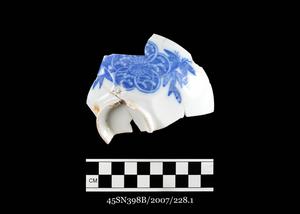
Bottom of Sometsuke Doban Sho Chiku Bai Gohan Jawan (rice/soup bowl with cobalt transferprint three friends design)
Item Record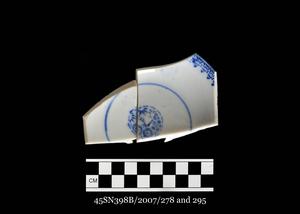
Interior of Sometsuke Katagami Sho Chiku Bai Gohan Jawan (rice/soup bowl with cobalt stenciled three friends design)
Item Record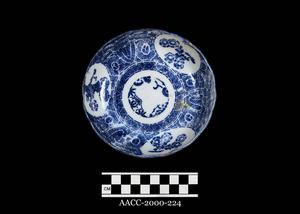
Top of Sometsuke Katagami Sho Chiku Bai Namasu-Zara (pickle dish with cobalt stenciled three friends design)
Item Record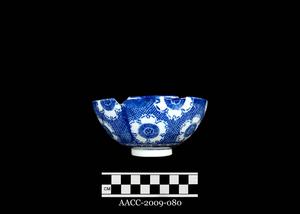
Side of Sometsuke Katagami Sakura Gohan Jawan (rice/soup bowl with cobalt stenciled cherry blossom design)
Item Record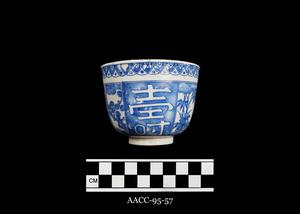
Side of Sometsuke Doban Choju Yunomi (teacup with cobalt transferprint longevity design)
Item Record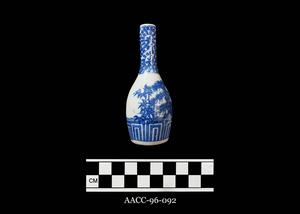
Side of Sometsuke Doban Sho Chiku Bai Tokkuri (sake decanter with cobalt transferprint three friends design)
Item Record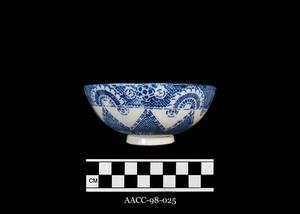
Side of Sometsuke Katagami Sho Chiku Bai Kobachi (small bowl with cobalt stenciled three friends design)
Item Record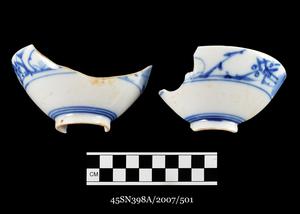
Exterior Profile View
Item Record